1. The clink of glass bottles meant the milkman had arrived
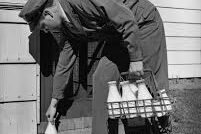
Before grocery chains took over, milk was personal. Each morning, the milkman delivered fresh bottles in wire crates right to your doorstep. The sound of glass clinking was the day’s unofficial wake-up call, and kids raced to the porch like it was Christmas morning. That simple sound tied families to their community dairy, and for many, it’s a memory as comforting as the taste of warm toast. It was a ritual that made mornings feel alive, marking the beginning of a day in a way that only those bottles could.
2. Cream rose to the top of every bottle
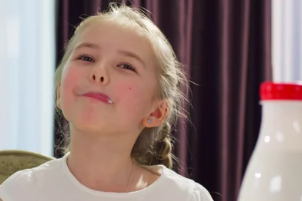
Whole milk back then came with a rich layer of cream floating on top. Families would spoon it off for coffee, cooking, or just as a treat. Kids who licked the cream straight from the bottle neck knew it was indulgent, messy, and unforgettable. It wasn’t homogenized perfection, it was rustic, uneven, and real, the kind of texture that made you feel closer to the farm it came from. That layer of cream turned an ordinary glass of milk into something special, carrying the taste of tradition and connection in every sip.
3. Empty bottles on the porch were part of the ritual
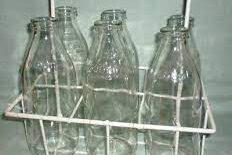
After breakfast, families rinsed their glass bottles and set them back outside for pickup. It was an early recycling system long before eco-friendly was a household phrase. The bottles came back again, cleaned, sterilized, and refilled, creating a satisfying loop of use and reuse. That little act of setting them out each night was part of the rhythm of family life, as familiar as locking the door. It was simple, responsible, and comforting, a small routine that built trust in the system and tied households together through the cycles of daily living.
4. The milkman was part of the neighborhood
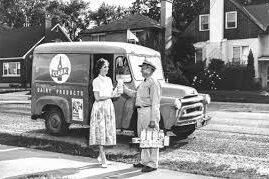
He didn’t just drop off bottles, he was part of the social fabric. Neighbors greeted him by name, kids waved, and parents sometimes shared quick chats. The milkman often knew who was sick, who had new babies, or who needed an extra quart. In many towns, he was more than a delivery person, he was a friendly constant, trusted like the mail carrier and as memorable as any teacher. His presence brought warmth to mornings and gave families a sense of belonging that went beyond milk, shaping neighborhoods into tighter, kinder communities.
5. Little glass bottles showed up in school cafeterias too
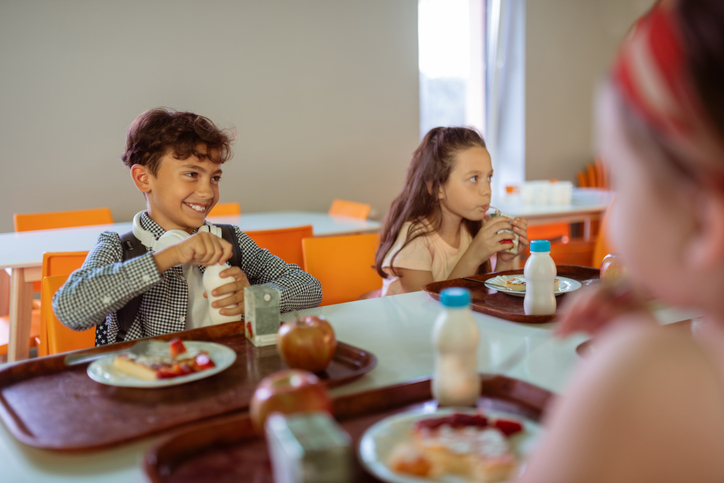
For kids, milk didn’t just arrive at home. In school cafeterias, lunches often came with tiny glass bottles of milk, each capped with cardboard. Opening them required peeling a circle off the top, which wasn’t always neat. The small bottles fit perfectly into kid-sized hands, and while they sometimes warmed quickly under cafeteria lights, there was nothing like the satisfying glug of tipping one back during lunchtime. Those bottles turned a simple lunch into a memory, creating a shared experience that kids carried with them long after the bell had rung.
6. Cardboard caps became a playground currency
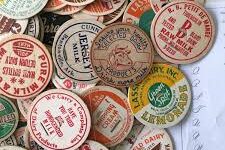
Those little cardboard discs weren’t just lids, they were playthings. Kids collected them, stacked them, and invented games during recess. Long before the 1990s pog craze, milk caps were already being flipped, traded, and coveted. What dairies saw as waste, kids turned into treasure. The schoolyard echoed with the slap of caps on pavement, as children competed in their own improvised tournaments with prizes that cost nothing at all. The caps brought laughter, fun, and imagination to ordinary days, transforming lunch leftovers into tokens of childhood creativity that no one ever forgot.
7. Milk cartons eventually replaced glass at schools
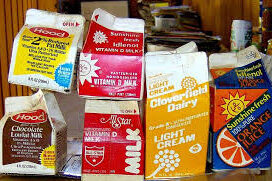
By the 1970s and 1980s, glass gave way to the iconic cardboard milk carton. Wax-coated and square, they were lighter and easier to distribute, but also messier. Opening the spout without collapsing it into a soggy mess was a rite of passage. Kids who mastered the perfect triangular pour felt like champions. For others, the occasional splash onto homework or trays was just part of the lunchtime experience. Cartons marked a new era in school cafeterias, one that was less charming than glass but still carried its own memorable quirks and lessons.
8. The pop of a straw through the foil top was iconic
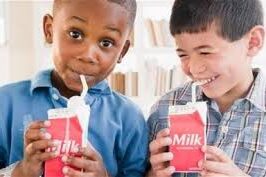
Some cartons didn’t fold open but instead had a silver foil circle at the top. The challenge was piercing it cleanly with a straw, sometimes it worked, sometimes the straw bent, and sometimes milk sprayed out. It was unpredictable, messy, and somehow fun. For kids, getting it right on the first try felt like a win, while botched attempts became cafeteria comedy. Lunch was never just about food, it was also about those tiny triumphs and silly mishaps that made milk part of the joy and frustration of growing up in school.
9. Chocolate milk was the ultimate upgrade
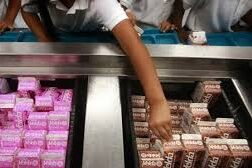
Plain milk cartons were routine, but chocolate cartons were pure gold. They disappeared first in the cafeteria line, sparking envy among those who were stuck with plain. Kids flaunted chocolate milk like trophies, sipping slowly for maximum effect. The rich, sweet taste transformed milk from obligation to indulgence. For many, those little brown cartons were the highlight of the school day, a rare treat that made even pizza Fridays better. Chocolate milk was proof that something simple could feel special, a little reminder that joy often came in small, everyday packages.
10. Strawberry milk added a wild card flavor
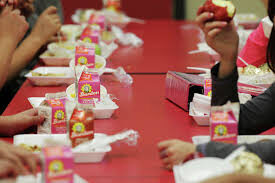
While not every cafeteria stocked it, strawberry milk was a cult favorite where it appeared. Its pink hue made it stand out, and kids either loved it or swore it was too sugary. The divisive drink was talked about long after lunch ended, fueling playground debates. Its rare appearance created excitement, kids grabbed it quickly before it vanished, knowing it was a special surprise in a sea of sameness. Strawberry milk was bold, colorful, and fun, the kind of flavor that broke the rules and left kids with unforgettable cafeteria memories.
11. Bosco syrup was the OG chocolate milk booster
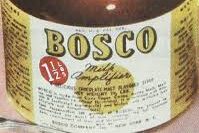
At home, kids often had to make their own chocolate milk, and Bosco syrup was the go-to. Thick and dark, it clung to the bottom of glasses no matter how long you stirred. That left the last sip intensely chocolatey and entirely worth the arm workout. For kids, Bosco wasn’t just a drink enhancer, it was part of the ritual of snack time, a memory sweet enough to linger. It brought flavor, fun, and anticipation, turning plain milk into a homemade treat that families happily shared and kids eagerly looked forward to.
12. Ovaltine gave milk a health halo
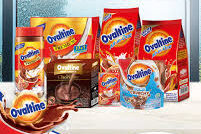
Parents loved Ovaltine because it was marketed as fortified with vitamins. Kids loved it because it made bedtime milk taste cozy, malty, and comforting. Its place in pop culture made it iconic, with jingles and mentions that still echo in memory. Drinking Ovaltine felt like a compromise, kids got a treat, parents felt virtuous, and everyone went to bed happy. It was nostalgia in a mug, warm and reassuring, the kind of drink that turned ordinary evenings into moments of calm. Ovaltine kept milk relevant in families by promising both goodness and taste.
13. Nesquik made stirring more fun
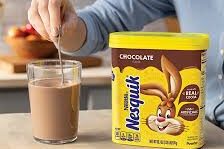
Nesquik, with its bright yellow canister and cartoon bunny, turned plain milk into an event. A few spoonfuls of powder transformed the glass instantly, creating swirling streaks of chocolate or strawberry. Kids loved watching the color spread, a tiny science experiment in their kitchen. For parents, it was a reliable way to make kids actually want to drink milk. Nesquik wasn’t just flavoring, it was theater in a glass, proof that something simple could be playful. The ritual of stirring and sipping became one of the sweetest ways to brighten everyday family life.
14. Instant powders were an after school staple
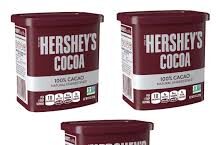
Beyond Nesquik, countless other mixes turned milk into treats. Hershey’s powder, Carnation malt, or store-brand chocolate mixes gave kids choices. After school, kids raided the pantry, scooping heaps into glasses and stirring until satisfied. The results weren’t always balanced, sometimes too sweet, sometimes too light, but that was part of the charm. Making chocolate milk wasn’t just about the drink, it was a hands-on ritual kids owned completely. The messy spoons, sticky counters, and eager smiles were all part of the experience, transforming an ordinary kitchen into a place of creativity and fun.
15. The missing kids campaign made cartons serious
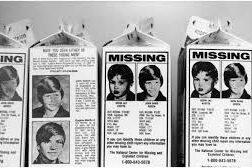
In the mid 1980s, milk cartons began carrying black and white photos of missing children. It was haunting and unforgettable. Families poured cereal while staring at faces of kids who had vanished, sparking questions and awareness. For many, it was their first brush with the reality of child safety. Milk cartons became more than containers, they became tools of collective responsibility, embedding tragedy into something as ordinary as breakfast. That campaign left a lasting impression, transforming milk into a vessel of awareness and connecting families to a broader sense of social duty.
16. Cartons also featured mazes, riddles, and games
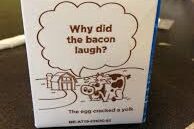
To balance the heaviness, some dairies printed games and jokes on their cartons. Kids solved mazes while sipping, or groaned at puns. In an era before smartphones, even packaging provided entertainment. Those little panels turned breakfast tables and cafeterias into mini play spaces, ensuring cartons always offered something more than milk. They were small but important companions during the long, slow moments of school lunches. For children, those puzzles made even ordinary meals feel engaging, proving that sometimes it took only a carton and some creativity to brighten up the school day.
17. Crushing empty cartons became a cafeteria sport
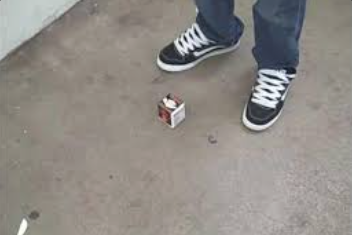
At the end of lunch, kids delighted in stomping cartons until they popped. The sound echoed across cafeterias, followed by laughter and groans from teachers. It was messy, rebellious, and harmless fun. Cartons weren’t just vessels, they were props in an ongoing theater of school mischief. The stomp heard across the cafeteria is a memory as sharp as the scent of milk itself. For many, this simple act became part of childhood’s unspoken traditions, proof that even the leftovers of daily life could carry excitement and bond kids in shared noisy fun.
18. Holiday cartons added seasonal flair
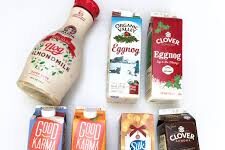
Some dairies went festive with their packaging, printing snowflakes in December or bright suns in June. These themed cartons made something mundane feel fresh, sparking joy at breakfast or lunch. Kids noticed the small changes and talked about them, proving even cartons could reflect the rhythm of the seasons. For many, those little details became tied to holiday memories in ways that outlasted the drink inside. Themed cartons were cheerful reminders that milk was more than food, it was part of the celebrations that made the year’s passing feel magical and memorable.
19. Cartons eventually gave way to plastic jugs
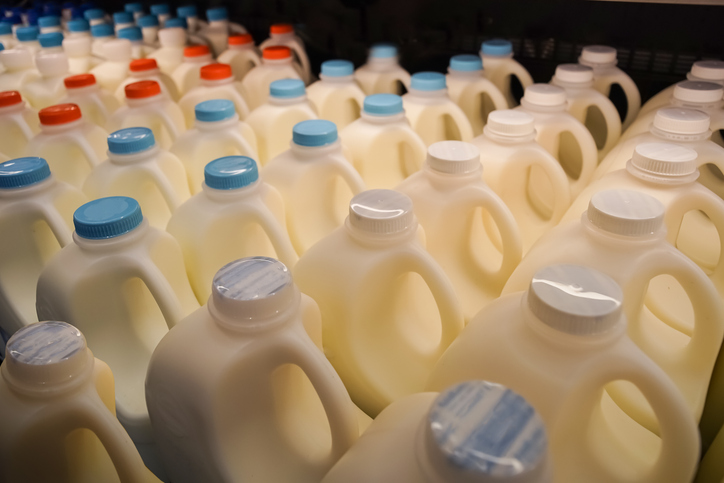
Over time, cartons and glass faded from shelves, replaced by plastic gallons. It was practical, easier to carry, harder to break, but something was lost. Gone were the spouts, caps, and quirky games. Milk became just another grocery staple, stripped of its little rituals. The convenience was undeniable, but nostalgia lingers for the era when milk delivery or school cartons made the ordinary feel special. Plastic carried efficiency, but it could not carry memory. The shift was useful, yet it closed a chapter in the story of milk and childhood ritual.
20. Elsie the Cow became milk’s first superstar mascot
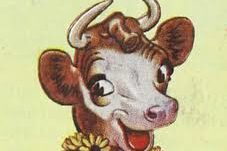
Borden’s Elsie the Cow, introduced in the 1930s, turned dairy into personality. She was friendly, wholesome, and everywhere from parades to TV ads. Kids recognized her instantly, and she gave milk an identity in a way no plain jug ever could. Elsie wasn’t just a cartoon cow, she was the face of an industry, and proof that milk could be branded with heart. Her presence added charm to everyday life, transforming milk into more than a drink and proving mascots could make even the simplest products feel alive with personality.
21. Got Milk turned mustaches into pop culture

Launched in 1993, the Got Milk campaign made milk cool again. Celebrities from athletes to pop stars wore milk mustaches in glossy ads, making the drink feel aspirational. The campaign’s simplicity and humor turned it into one of the most successful advertising slogans ever. For many, those posters in school hallways are as iconic as the milk cartons they grew up with. Got Milk showed that something ordinary could become exciting with the right spark, turning breakfast into a cultural moment and milk into one of the most talked about beverages.
22. Milk mustaches were a rite of passage
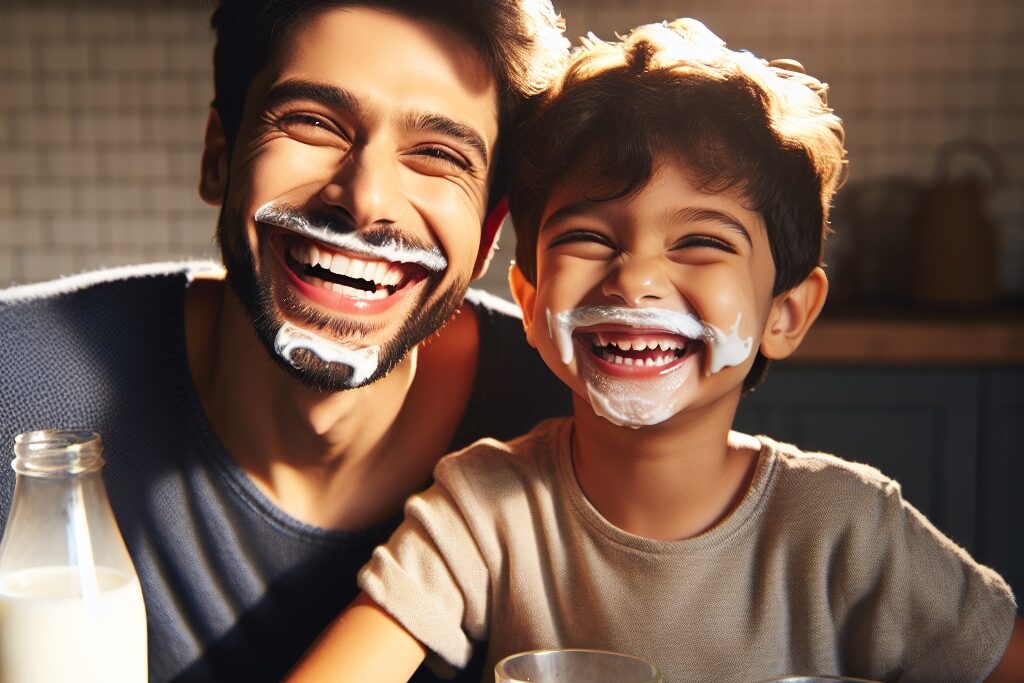
Long before the ad campaign, kids were already sporting them at the breakfast table. Slurping milk too quickly left a foamy white streak above your lip. Parents teased, siblings laughed, and it became a silly, universal marker of childhood mornings. Ads might have glamorized them, but every kid had a real one. The mustache was a playful badge of growing up, shared in countless households. It was a reminder that the smallest things can bring the biggest laughs, proof that family mornings were about more than food, they were about togetherness.
23. Cereal bowls made milk a co star
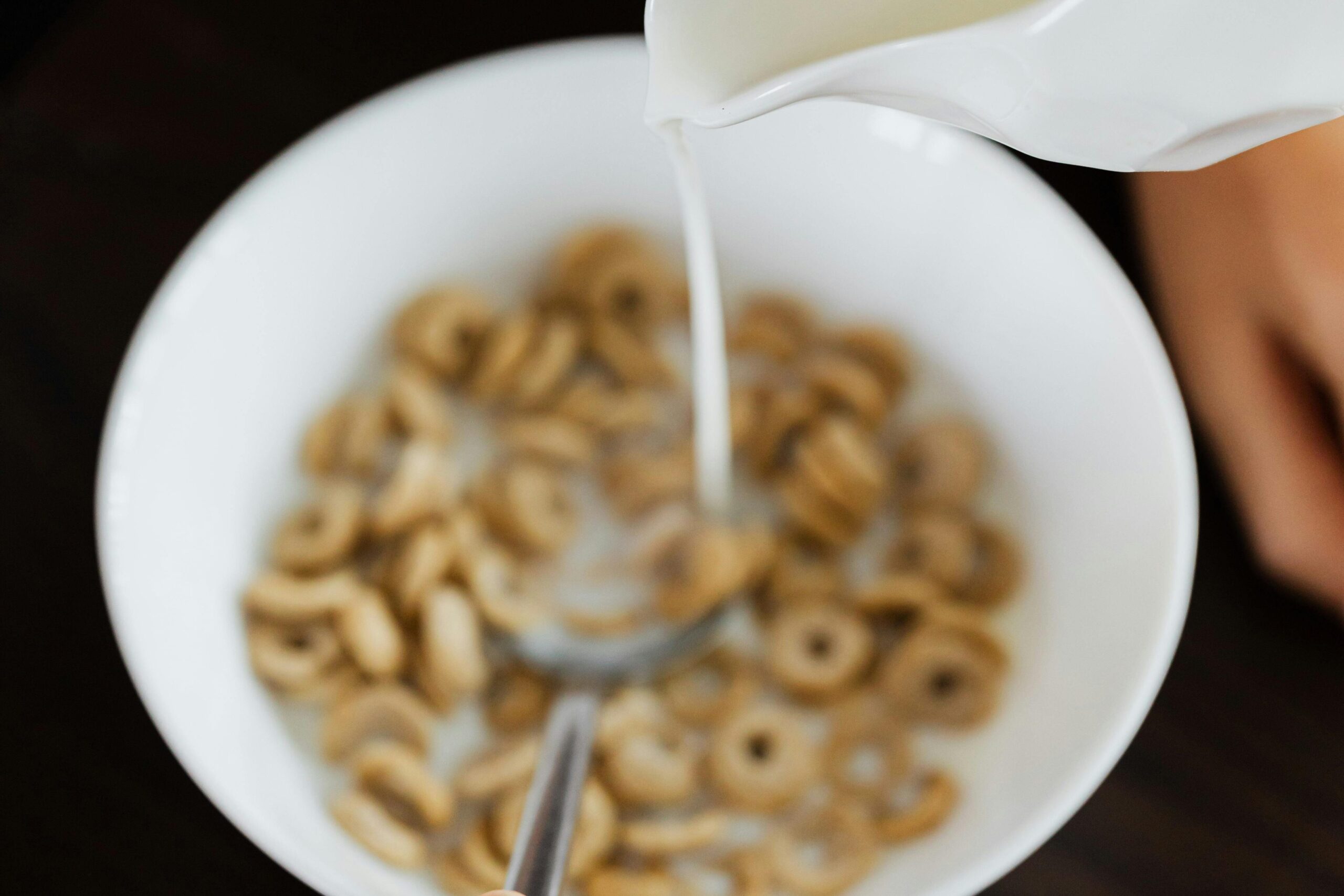
For generations, cereal wasn’t complete without milk. It wasn’t just a beverage, it transformed cornflakes into breakfast and Cocoa Puffs into chocolate milk. The leftover milk at the bottom of the bowl was a sweet bonus treat, a reward for finishing. Without milk, cereal was just crunchy dust, with it, it was magic. The pairing created morning rituals that families cherished, proof that milk didn’t stand alone but shared the stage. Every spoonful carried both taste and memory, making breakfast less about food and more about the joy of simple daily tradition.
24. Now milk comes in every variety some not even really milk
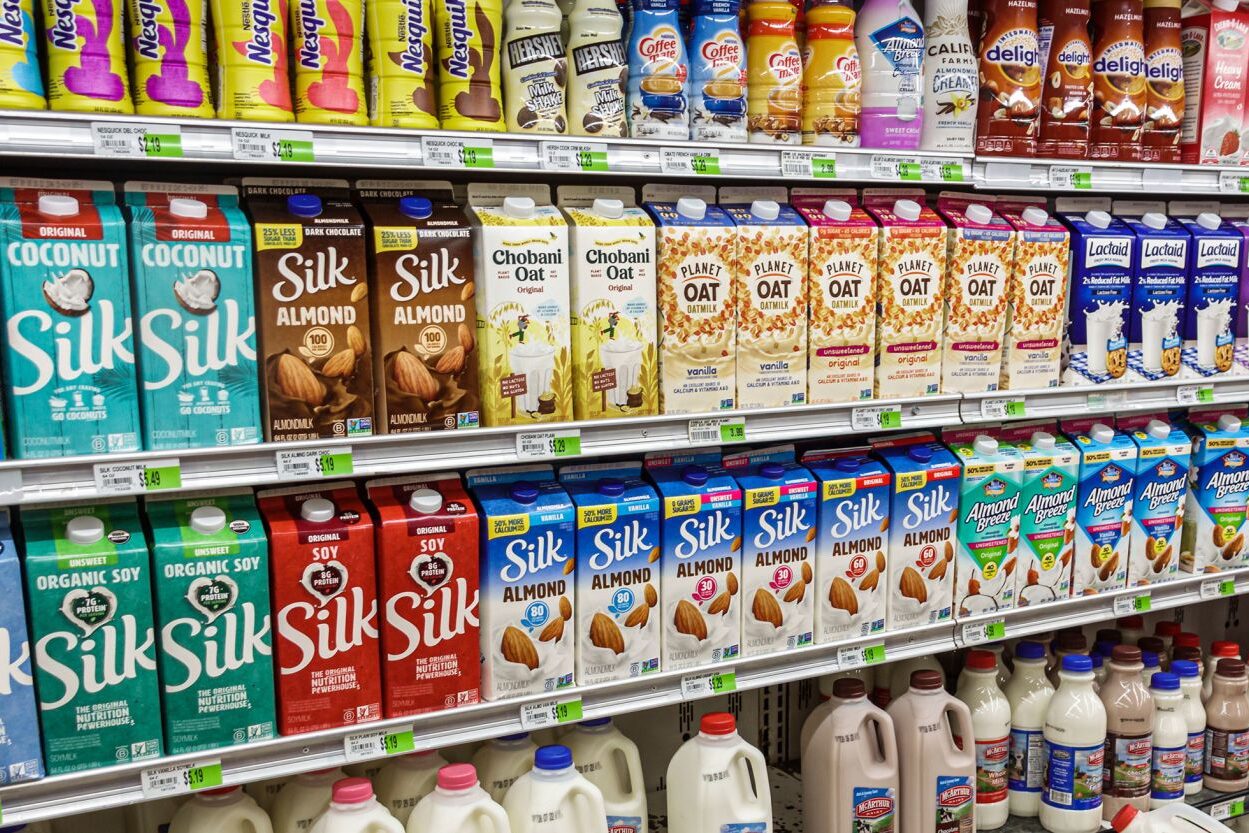
Today’s shelves are crowded with cartons of almond, oat, soy, coconut, and lactose free milks. They’ve sparked endless debates, can something without a cow really be called milk. For younger generations, they’re normal, for older ones, they’re strange pretenders. Either way, the simple choice between white or chocolate has exploded into a dizzying menu. Nostalgia might belong to glass bottles and cardboard cartons, but the milk aisle now looks more like a coffee shop menu. It shows how times change, reminding us that milk always adapts, even if memories cling to the past.
25. Milk was more than a drink it was culture
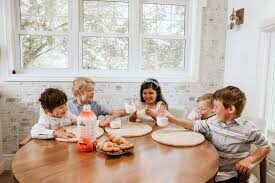
From milkmen clinking bottles at dawn to kids crushing cartons in cafeterias, milk shaped daily life for decades. It was nourishment, yes, but also ritual, play, advertising, and even activism. Each stage, bottle, cap, carton, jug, mustache, carried its own flavor of memory. Looking back, milk wasn’t just something we drank, it was part of who we were, woven into the fabric of everyday life. It shaped mornings, conversations, and laughter. And even now, when we pour it over cereal or into coffee, the culture of milk still lingers with quiet sweetness.
This story 25 Milk Memories: From Bottles on the Porch to Cartons in the Cafeteria was first published on Daily FETCH


